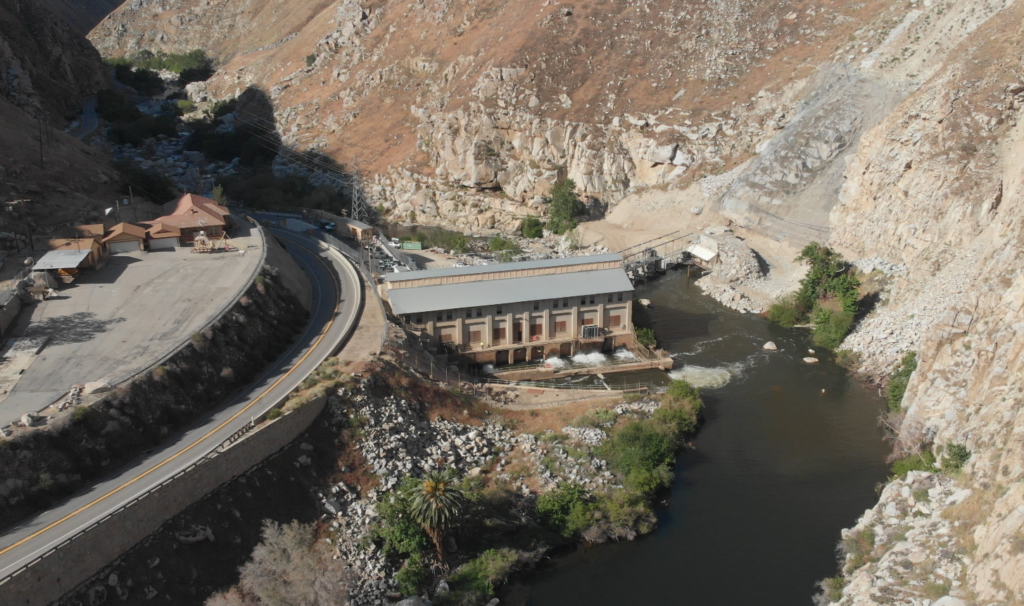Boaters and anglers who’ve long complained about the impacts of two power plants on Kern River flows, want federal regulators to give more water back to the river as part of separate relicensing procedures now underway.
“Our main issue is continual flows,” said Jim Ahrens, president of the Kern Fly Fishers club. “To have a fishery, you need water flow.”
Ahrens noted these licenses dictate how the plants will be operated for the next 30 or more years, so it’s important for the public to have a say.
Both plants are owned by Southern California Edison. One is above Kernville, called Kern River 3 (KR3). The other is about two miles inside the mouth of the Kern River Canyon, called Kern River 1 (KR1).
Southern California Edison takes water from behind the Fairview Dam near McNally’s and pipes it 16 miles downriver to KR3. It takes water from behind the Democrat Dam into pipes for 14 miles before dropping it into KR1.
In both cases, river advocates say, Edison is allowed to take far too much out of the river, which is especially problematic during the watershed’s more frequent dry periods.
“Half the time, there is more water in the pipes of KR3 than in the bypassed river,” wrote Kern River Boaters co-founder Brett Duxbury in a letter to a newspaper.
Further down river, the KR1 plant has diverted so much water, the river was left with only 15 cubic feet per second for fish flows during the recent drought, Duxbury wrote in comments on KR1’s relicensing application.
“It looked more like a rock quarry than a river,” he wrote.
Ahrens and Duxbury also questioned the cost-benefit of both power plants. How much energy does each plant generate, Ahrens asked?
In the case of KR3 above Kernville, power production typically occurs during spring runoff season when the river has enough water to run the plant and maintain legally required minimum fish flows.
When at full capacity, KR3 can generate up to 40.2 megawatts, according to a Southern California Edison spokeswoman in a previous interview. But, she noted, its operation is subject to the river’s notoriously mercurial flows.
According to Duxbury, the plant averages 12 megawatts, or .037% of the state’s total electricity generation.
Southern California Edison representatives said at a recent scoping meeting on what should be studied as part of the company’s relicensing application that KR1 and KR3 are both considered “medium” sized plants in terms of power generation. They added that KR1 generates more than 26 megawatts, or enough to power 26,000 homes.
“But how big are these plants in Edison’s overall portfolio?” Ahrens asked. “I don’t think they really answered that question and we will be pressing them on that.”
Does the power benefit outweigh the damage to the river, Ahrens wanted to know?
He noted that in 2001, Southern California Edison “flushed” 272,000 cubic yards of silt that had built up behind Democrat Dam into the river below. It smothered the river, snuffing out the bass fishery.
The glut of gunk was so massive, it took seven years to move through the river, one of Southern California Edison’s consultants said, according to a 2013 article in The Bakersfield Californian.
The utility was required to come up with a sediment management plan. But that plan, apparently, has allowed it to dump between 3,000 and 20,000 cubic yards into the river. Which it did in 2007, 2009, 2011, 2012 and 2013, when The Bakersfield Californian did a story with photos showing a thick shelf of silt clinging to boulders two feet above receding flows.
“Make Edison haul their sediment away, provide radically increased minimum flows, and order Edison to reestablish a viable fishery,” Duxbury urged in his comments on the proposed relicensing.
The relicensing process has just started for KR1.
The KR3 process is a little further along with several studies already underway.
The public still has time to get involved. In fact, Southern California Edison is seeking greater input on recreational use upriver from the KR3 plant.
Share this:
- Click to share on Facebook (Opens in new window)
- Click to share on Twitter (Opens in new window)
- Click to share on LinkedIn (Opens in new window)
- Click to share on Reddit (Opens in new window)
- Click to share on Tumblr (Opens in new window)
- Click to share on Pinterest (Opens in new window)
- Click to share on Pocket (Opens in new window)
- Click to share on Telegram (Opens in new window)
- Click to share on WhatsApp (Opens in new window)
- Click to print (Opens in new window)







